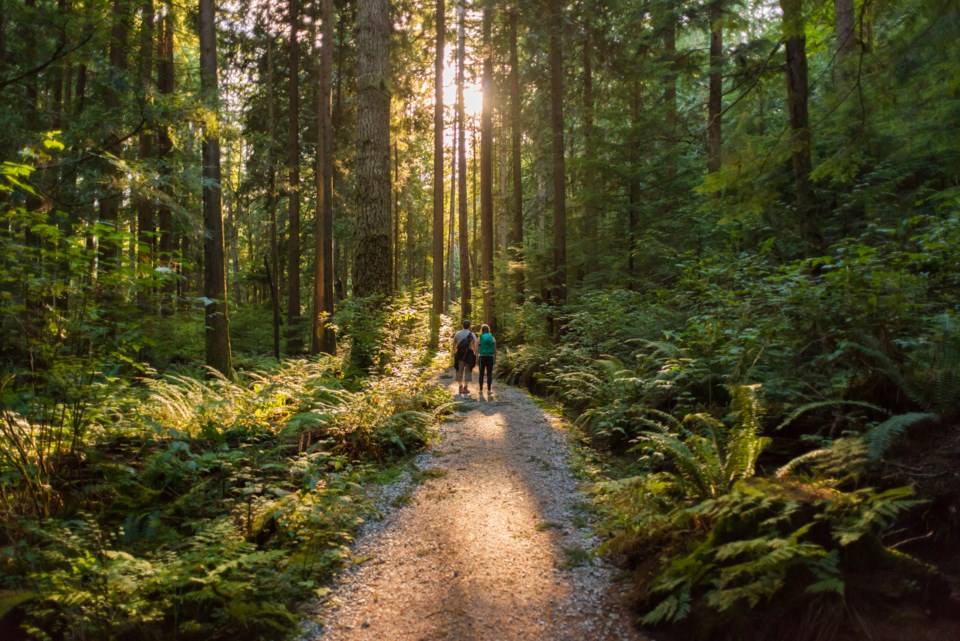Global warming is affecting the boreal forest — what happens will depend on the climate, vegetation and the frequency and intensity of wildfires. Changes in the north include increases or decreases in leaf growth, called , and . It is the interaction of fire, climate and time that determines the nature of the forest-tundra today and how it changes in response to climate variability.
Flammable landscapes and weather fronts
Fires are an important component of the boreal region, burning off old trees and leading to a regeneration of the forest. After a fire, shrubs and deciduous trees grow more quickly and form the canopy, and are eventually replaced by slower-growing spruce. This results in a landscape which is a mosaic of patches, each the size of a fire.
More fires may lead to more of the landscape being in an earlier stage of the post-fire succession growth, including less-flammable shrubs and deciduous trees. At present, the forest is more flammable, as more of the landscape is dominated by spruce, and this is a legacy of the recent past.
The nature of the forest-tundra depends on variability in the position of the Arctic front and on the fire history of the region, but also its history over the past few millenia.
The Québec forest-tundra
The treeline — the edge of the forest where it meets the tundra — can span from tens to hundreds of kilometres in length. The location of the treeline corresponds to — a transition between a cold arctic air mass and warmer air.
In northern Québec, the . In the lichen woodland, trees grow throughout the entire landscape. After a fire, trees grow back, as the growing season is long enough to enable seedlings to survive.
To the north, the tops of hills no longer have trees, and the altitude of tundra vegetation becomes lower and lower, gradually covering more of the landscape. Trees still grow on the lower elevations, and typically they reproduce after a fire.
Still further north, tundra covers a larger area of the landscape and spruce are now restricted to growing around lakes or in valleys. Spruce here are typically in , with their growth stunted by the cold, windy conditions. Spruce adopts this shrub form when under stress, where the branches remain near the ground with only occasional shoots growing above the snow level.
A small colony of krummholz can maintain itself for centuries in sub-optimal conditions. After a fire, the spruce are killed and there is no reproduction, so over centuries this zone gradually becomes deforested. However, if the climate changes favourably, the trees revert to normal growth and can establish new populations through seeds.
Climate change history
A long period of cooling or warming makes the zones move south or north. During warm periods, trees grow more to the north, while this doesn’t happen during cold periods.
As the ice sheet that covered nearly all of Canada melted away between 20,000-6,000 years ago, plants migrated north. In the Mackenzie Delta region in the Northwest Territories, the ice retreated relatively early, and trees arrived over 10,000 years ago.
As the ice sheet continued to melt, exposing central Canada, . Trees could no longer survive in the northernmost region of the Mackenzie Delta, so the treeline moved south. And in central Canada, trees could now grow further north. Later, as the ice disappeared in Québec, trees migrated into northern Québec. The migration occurred rapidly and changes in the different regions occurred synchronously, but out of phase.
Plant migration and treeline movement
Migration of plants in response to climate changes has two components. A slow migration to the north can occur during warming. Seeds are dispersed away from the parent plant and if the climate conditions are suitable, every generation can establish a little further north. Since the climate is always variable, this occurs in starts and stops.
A second — and more important — mechanism is long-distance migration. The transport of seeds or whole trees down rivers, across the snow or ice, or by birds or animals, enables migration of tens to thousands of kilometres in a very short time. , and this process insures rapid migration to new areas due to the warming climate.
Present-day warming
During the past 4,000 years, there was a long-term cooling — referred to as neoglaciation — . Previously, tree populations were more abundant in the forest tundra of northern Québec. As the climate cooled, the trees reverted to shrub form but no longer reproduced. Fires eliminated some, and since there was no reproduction, the region attained its present-day character.
Now, as the climate is warming, krummholz in place will expand, grow and reproduce. Thus, there is a large area where trees can colonize, suggesting the treeline can move rapidly northward. The long-distance transport of seeds across northern Canada will also enable rapid migration.
However, the relative impact of climate warming and increased fires needs to be accounted for. Thus, present warming of northern Canada will impact the northern vegetation in a complex way, with different regions responding differently, and with some processes occurring rapidly, and others with long time lags.
![]()
Konrad Gajewski receives funding from NSERC.




